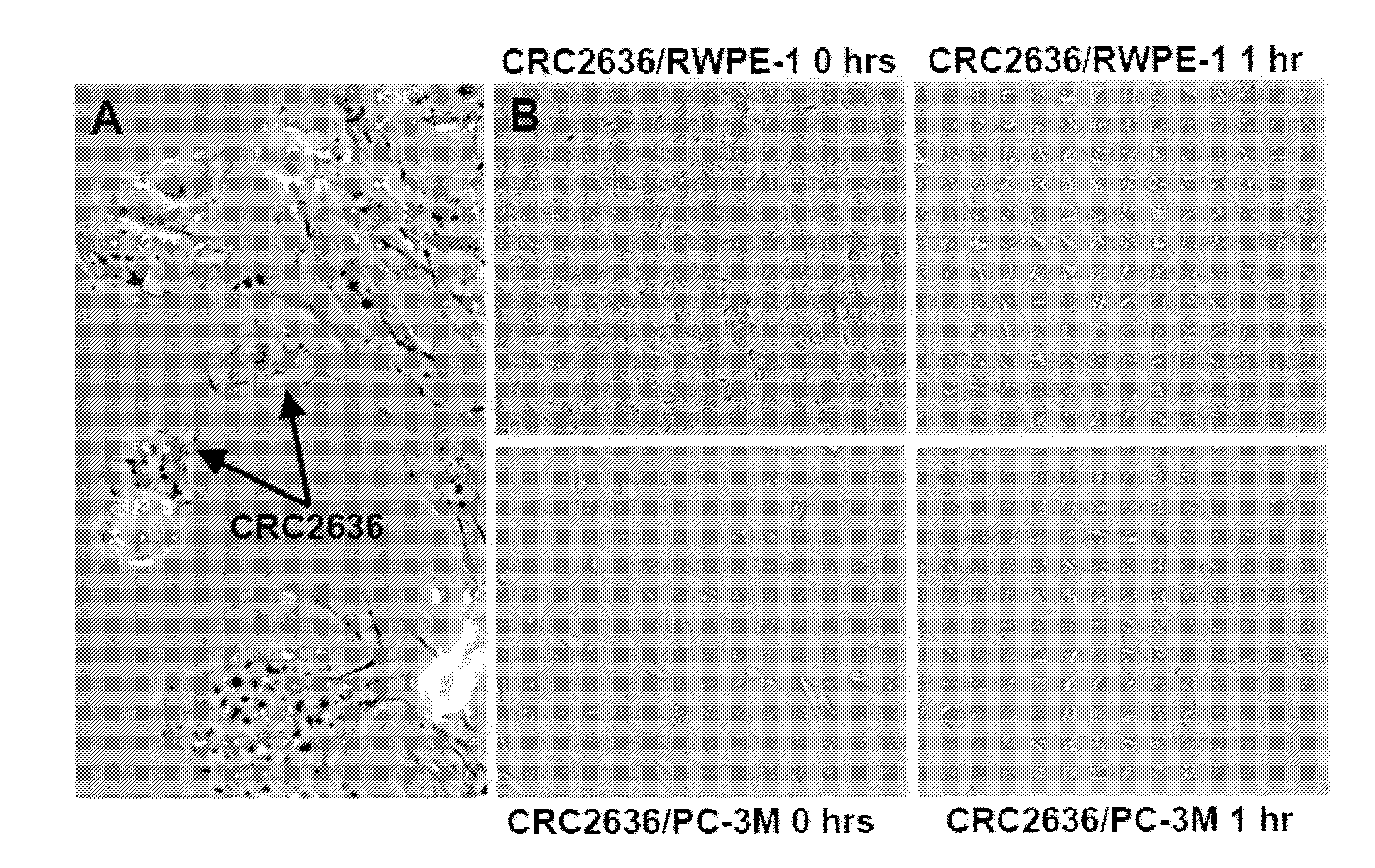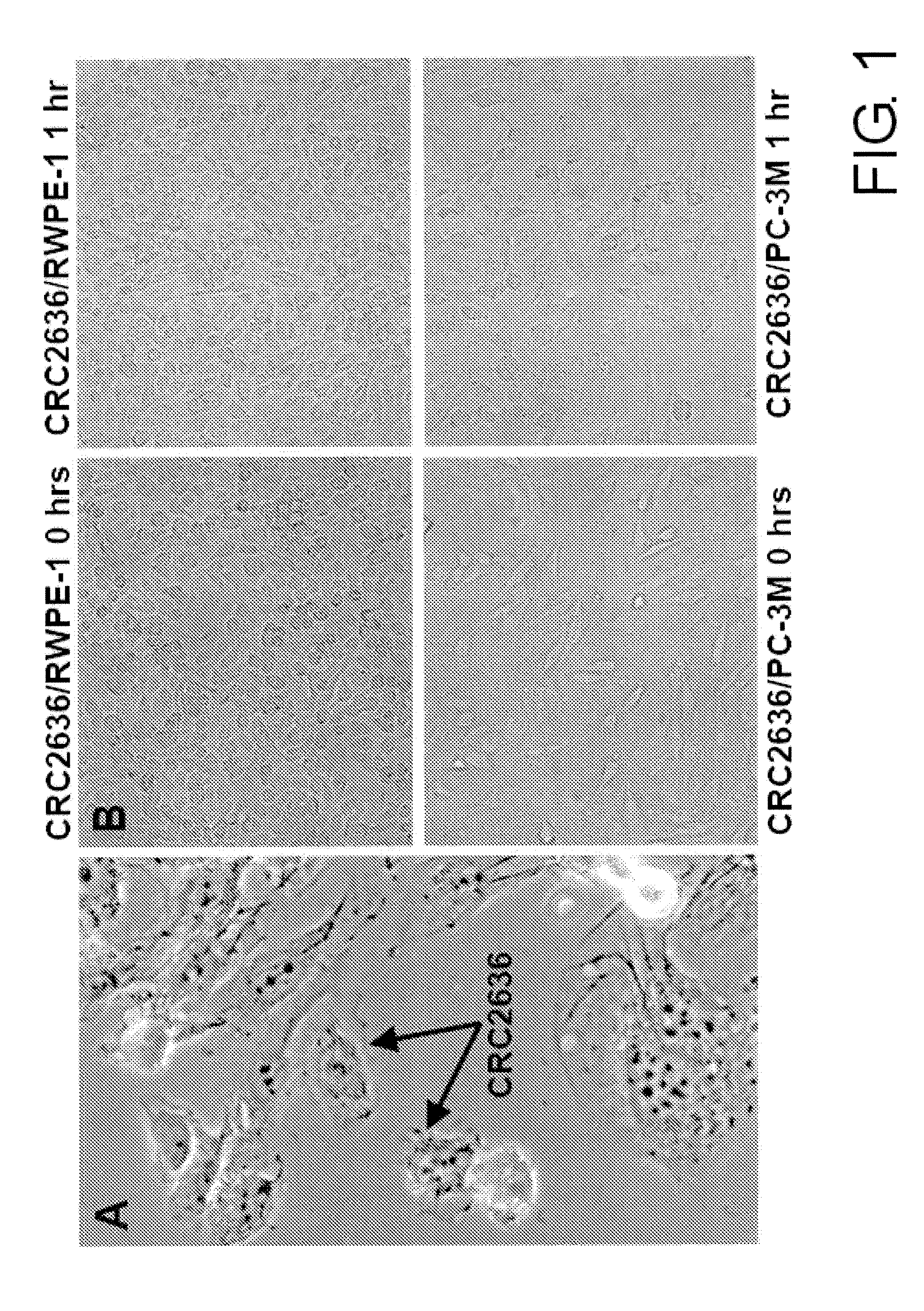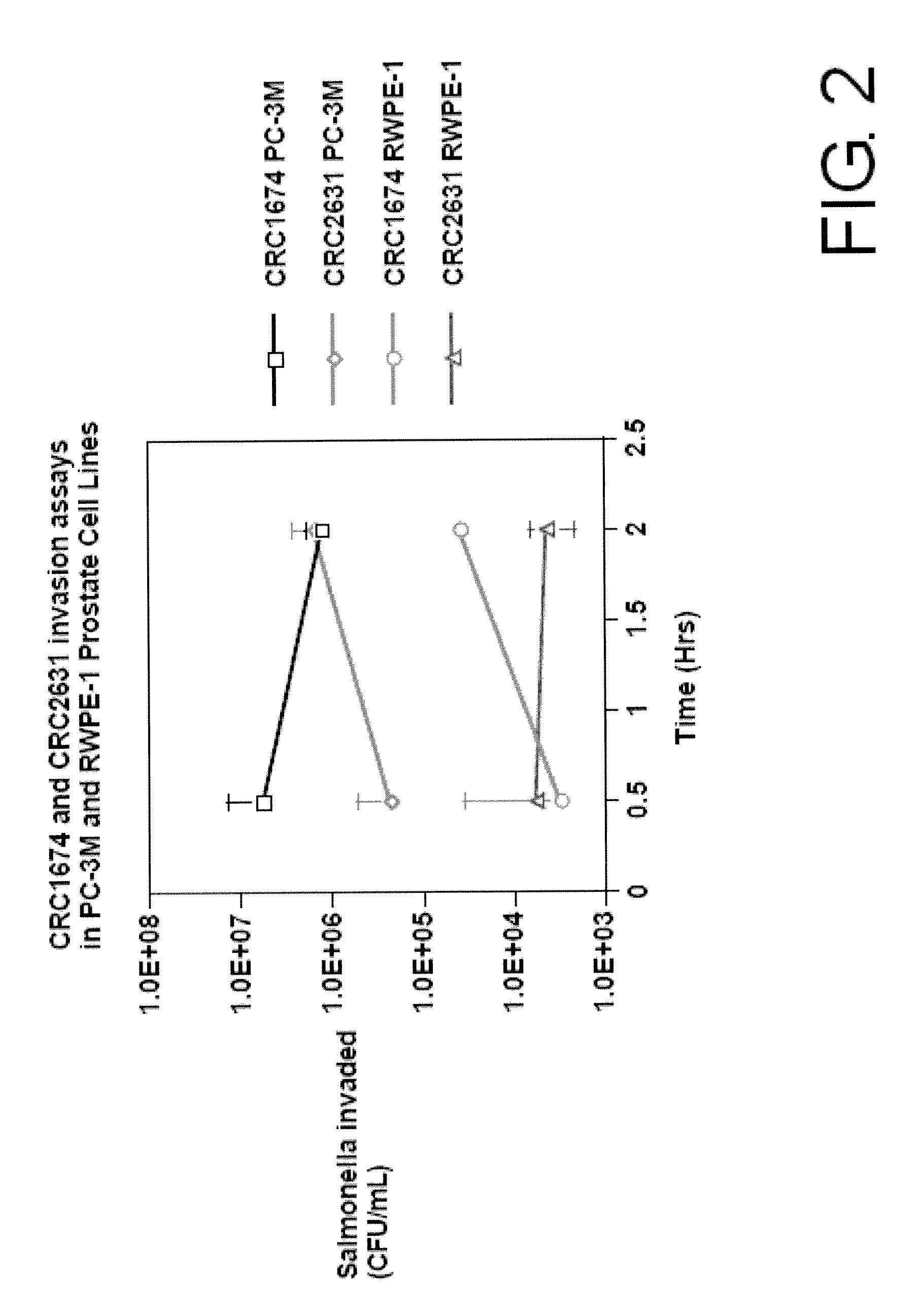Microorganism Strain CRC2631 of Salmonella typhimurium and its Use as a Cancer Therapeutic
a microorganism and cancer treatment technology, applied in the field of salmonella typhimurium crc2631, can solve the problems of inacceptable toxicity levels, many chemotherapeutic agents are highly toxic to the body, and therefore cannot be used as a therapeutic organism, and achieves high specificity, high intensity, and high specificity.
- Summary
- Abstract
- Description
- Claims
- Application Information
AI Technical Summary
Benefits of technology
Problems solved by technology
Method used
Image
Examples
example 1
CRC1674 Retains the Ability to Target Prostate and Breast Cancer Cells In Vivo
[0061]CRC1674, one of the archival LT2 strains of S. typhimurium, retains the ability to target prostate and breast cancer cells in vivo, as shown in FIG. 3. The top panel of FIG. 3 shows co-incubation for one hour of live RWPE-1 cells and CRC1674. Both RWPE-1 cells and CRC1674 cells were fluorescently labeled. As shown in the figure, CRC1674 showed no affinity for RWPE-1 cells. The photographs provided in the figure were obtained using confocal microscopy of two different focal planes.
[0062]The bottom panel of FIG. 3 compares the targeting of fixed PC-3M prostate cancer cells by S. typhimurium strains CRC1674 and VNP20009. VNP20009 is a strain of S. typhimurium already known to shrink solid tumors. As shown in the figure, CRC1674 more effectively targeted PC-3M than did VNP20009. A greater proportion of CRC1674 bacteria are seen attached to the PC-3M cells as compared to VNP20009, which is present in equa...
example 2
CRC2631 Preferentially Invades PC-3M Cancer Cells
[0063]S. typhimurium strain CRC2631 was observed to attach to RWPE-1 normal prostate cells at low levels. Gentamycin exclusion assays were performed in order to determine the rate of normal RWPE-1 cell invasion versus cancer PC-3M cell invasion. An initial 2 mL of media containing about 5×106 to 1×107 colony-forming units (CFU) of S. typhimurium CRC2631 in co-incubation with PC-3M and RWPE-1 cells was removed after 0.5 hours of incubation and replaced with appropriate cell culture media containing 40 μg / mL gentamycin. This killed all non-invaded Salmonella.
[0064]Approximately 1% to 10% of the initial CRC2631 load was able to successfully invade PC-3M prostate cancer cells after a thirty-minute incubation. Less than about 0.1% to 1% of the initial CRC2631 load was able to invade the normal RWPE-1 cells over the same time period. After twenty-four hours both strains CRC1674 and CRC2631 exhibited an increase in PC-3M cells, but not in RW...
example 3
Fluorescent CRC2636 Binds Preferentially to PC-3M Cells but not to Normal RWPE-1 Cells
[0065]Strain CRC2631 was provided with a plasmid expressing a red fluorescent protein (pRST-mCherry) in order to produce fluorescent strain CRC2636. This strain was then co-incubated with RWPE-1 cells in one instance, and with PC-3M cells in a second instance. FIG. 1a shows preferential binding of CRC2626 to PC-3M after twenty minute incubation period. FIG. 1b, top panel, shows that CRC2636 did not target normal RPWE-1 cells after one hour of incubation. Conversely, FIG. 1b, bottom panel, shows that CRC2636 did in fact target PC-3M carcinoma cells after incubation for the same amount of time. As can be seen in the figure, a larger number of CRC2636 (greater than one-hundred) cells are bound to sub-confluent PC-3M cells as compared to CRC2636 cells bound to fully confluent RPWE-1 cells (approximately eight).
PUM
 Login to View More
Login to View More Abstract
Description
Claims
Application Information
 Login to View More
Login to View More - R&D
- Intellectual Property
- Life Sciences
- Materials
- Tech Scout
- Unparalleled Data Quality
- Higher Quality Content
- 60% Fewer Hallucinations
Browse by: Latest US Patents, China's latest patents, Technical Efficacy Thesaurus, Application Domain, Technology Topic, Popular Technical Reports.
© 2025 PatSnap. All rights reserved.Legal|Privacy policy|Modern Slavery Act Transparency Statement|Sitemap|About US| Contact US: help@patsnap.com



